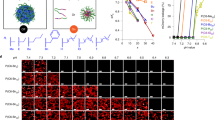Abstract
The extracellular pH (pHe) in solid tumours is frequently lower than the pHe in normal tissues. Cells within an acidic environment depend on mechanisms which regulate intracellular pH (pHi) for their survival, including the Na+/H+ antiport which exports protons in exchange for Na+ ions. Amiloride and its analogues DMA (5-(N,N-dimethyl)amiloride), MIBA (5-(N-methyl-N-isobutyl)amiloride) and EIPA (5-(N-ethyl-N-isopropyl)amiloride) are known to inhibit the Na+/H+ antiport and therefore decrease the cells ability to regulate pHi. All three analogues were found to be potent inhibitors of the antiport in human MGH-U1 and murine EMT-6 cells, with DMA being approximately 20, MIBA 100 and EIPA 200-fold as potent as amiloride; EIPA also gave more complete suppression of the Na+/H+ antiport. These agents were not toxic to cells when used alone; however, in combination with nigericin, an agent which acidifies cells, all three analogues were toxic to cells at pHe < 7.0, and markedly enhanced the toxicity of nigericin alone. Cell killing was greatest for nigericin used with EIPA or MIBA. None of the agents were toxic to cells at pHe 7.0 or above. When used against variant cells lacking the Na+/H+ antiport (PS-120 cells) EIPA did not enhance the cytotoxicity of nigericin alone, suggesting that the observed effect was due to inhibition of Na+/H+ exchange, rather than due to non-specific effects. The combination of EIPA and nigericin gave similar cell killing in previously dissociated and intact MGH-U1 spheroids, suggesting that the agents have good penetration of solid tissue. Preliminary experiments using EMT-6 tumours in mice suggested that EIPA and nigericin were able to enhance the toxicity of radiation in vivo, presumably through selective effects against the hypoxic (and probably acidic) subpopulation of cells that is resistant to radiation.
This is a preview of subscription content, access via your institution
Access options
Subscribe to this journal
Receive 24 print issues and online access
$259.00 per year
only $10.79 per issue
Buy this article
- Purchase on Springer Link
- Instant access to full article PDF
Prices may be subject to local taxes which are calculated during checkout
Similar content being viewed by others
Author information
Authors and Affiliations
Rights and permissions
About this article
Cite this article
Maidorn, R., Cragoe, E. & Tannock, I. Therapeutic potential of analogues of amiloride: inhibition of the regulation of intracellular pH as a possible mechanism of tumour selective therapy. Br J Cancer 67, 297–303 (1993). https://doi.org/10.1038/bjc.1993.56
Issue Date:
DOI: https://doi.org/10.1038/bjc.1993.56
This article is cited by
-
Bifunctional small molecules that mediate the degradation of extracellular proteins
Nature Chemical Biology (2021)
-
Pyrazine ring-based Na+/H+ exchanger (NHE) inhibitors potently inhibit cancer cell growth in 3D culture, independent of NHE1
Scientific Reports (2020)
-
Effects of ion channel modulators in the influx and efflux of Tc-99m-MIBI
Annals of Nuclear Medicine (1999)
-
Effects of synthetic urokinase inhibitors on local invasion and metastasis in a murine mammary tumor model
Breast Cancer Research and Treatment (1996)
-
Defining topological similarities among ion transport proteins with anti-amiloride antibodies
Kidney International (1995)



